Seeing immediate results from your marketing efforts can be hard. When you’re starting out to do something new, progress is slow and your wins can be very small.
That makes a lot of store owners nervous. Doubts pop up. Am I doing things right? Shouldn’t I start seeing some sales come in?
And with a million other to-dos on your list it is hard to prioritize marketing if you don’t see any obvious pay-off from it.
But most of the time you have to stick with it for a while. Give it more time or slightly adjust your approach until you find something that really work.
In this article I want to dive into why marketing efforts sometimes take longer to pay off, and what you can do to see results faster.
When do people buy?
People buy when they are ready to buy. That seems obvious but really it is not.
When people visit your store, only a small percentage of them are ready to buy then and there. The industry average conversion rate of 2% illustrates that nicely.
There could be hundreds of reasons why a visitor doesn’t purchase.
Before someone is ready to buy from you they go through a process that looks like this:
- They have to know about your store and the products you sell
- They have to be interested in your products
- They need to be convinced them that you are a reliable partner
In short: they have to know, like and trust you.
Sometimes all of the above happens in the blink of an eye. If I’m walking on the street and I’m thirsty I buy the next bottle of water I see.
Easy.

I don’t need to know the store or the brand of water (although I’ll probably grab a brand I know). I’m really interested in the product even before I go in. And because the price is low I don’t really need to like or trust the store. After all, how bad can I get screwed on a bottle of water?
But it’s clear that it becomes a lot more complicated if you’re buying a sweater, a phone or a house.
Your customer also needs more time to make up his or her mind.
The Rule Of Seven
For years big advertisers like Coca-Cola have wondered: How many time does a person need to see my brand before she buys it?
People in sales were pondering a similar question: how many times do I need to get in touch with a prospect to make a sale?
The answer? Researchers have come up with all kinds of numbers: from 3, 5, 7 or even 20 touches.
I like the number seven because it rules out pure luck.
When you are promoting your online store, you’re competing for your customer’s attention. There already is so much noise in his inbox, Instagram feed or Facebook news feed. Plus most people don’t care about companies or brands so if you’re not standing out, they won’t notice you.
You could get in front of potential customers a couple of times without them really having any clue about your store’s existence. Maybe they checked out a product but didn’t see your store’s name. Or they liked a blog post you wrote but have no idea who was behind it.
So 2 or 3 interactions might not be enough for them to be ready to purchase. Seven interactions also sets expectations that conversions won’t happen overnight. If you’re a new store, reaching a person 7 times will takes weeks, maybe even months.
The more you can get in front of a potential customer the better. But more important than the sheer quantity is the quality of those interactions.
Someone that sees a tweet flying by isn’t the same as someone that’s on your site watching a product review video.
Next I’ll show you how you can use the information about the different stages of the buying process to adjust your marketing and make your customer interactions more effective.
Stage 1: Raising awareness for your online store
At this stage it’s all about getting people to hear about your store and increase your visibility. First I’ll got into how branding can accomplish that, then I’ll show you how retargeting can increase awareness.
Branding
Branding is the core foundation that could have the biggest impact on all of your marketing efforts.
Many store owners brush it off as something abstract or theoretical so they skip ahead and ignore it.
But to me your brand is how your store feels. It’s the sum of a lot of different things. Why did you start your store? What makes it different from others? How do you pick the products you’re selling? What’s your store’s name, your logo, the colors you use, the tone in your writing, your store URL.
The way you can use branding to have a bigger impact with your marketing is by staying consistent in what you do.
Let me show you some examples to illustrate this.
All of the videos that Beard Baron put on YouTube videos have an intro:
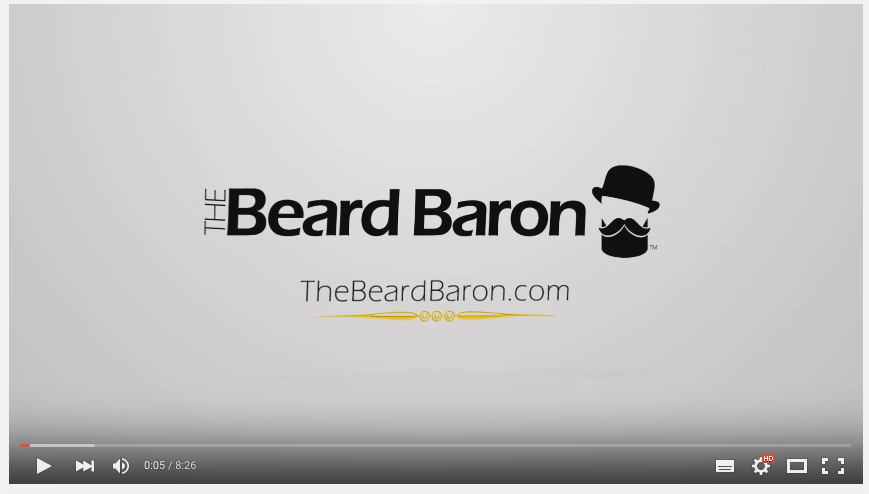
And when the video starts playing the brand is still visual.
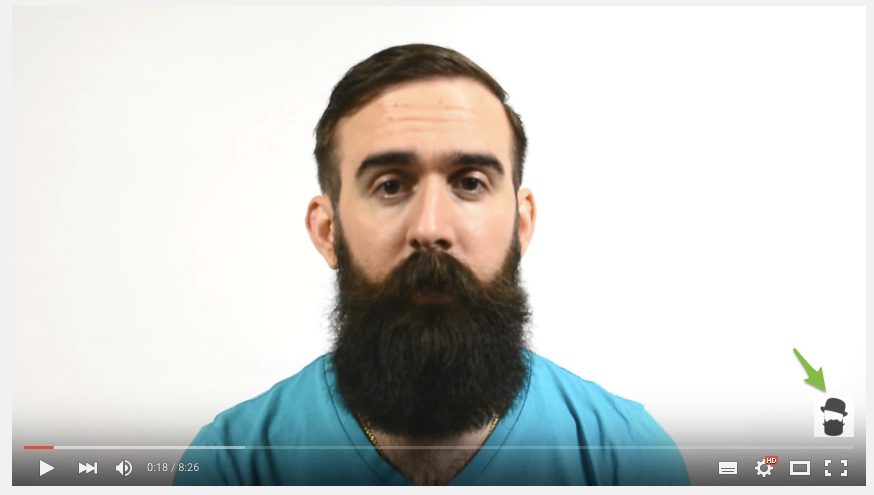
Check this article to learn how to add that image to your YouTube videos.
Adding logos or watermarks can also work to establish your brand. But don’t go overboard and keep it interesting to your readers or viewers.
To get a good logo you can spend a lot of money, or you can keep costs down if you use an original font as a logo, crowdsource to a professional logo designer, or an online logo generators.
But once you pick one, stick with it. You’re trying to create a visual identity. And you build it by being consistent over time. If you keep changing things, people won’t be able to recognise your store or brand. Take a look at how Tropicana lost $137 million by made the mistake of changing too much at once.
Let’s take a look at the visual elements that toy art seller Kidrobot is using.
Here is the Facebook logo:
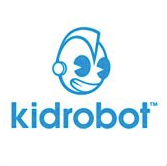
The logo on Twitter:
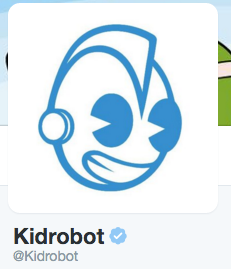
The logo on their homepage:

The font is the same, but the colors are different and there is no sign of the little smiling robot. I only found him hiding in the little icon in the address bar:

I was watching some of their older videos and found this logo that they used back in 2007. So although there are some small inconsistencies, the overall visual elements have remained the same.
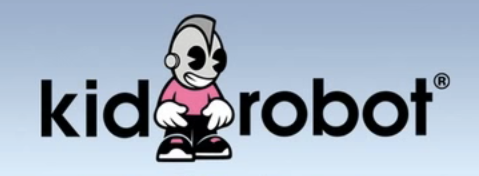
Another example comes from Frostbeard Studio. They are all about candles for book lovers and their Instagram feed shows exactly this: books & candles.
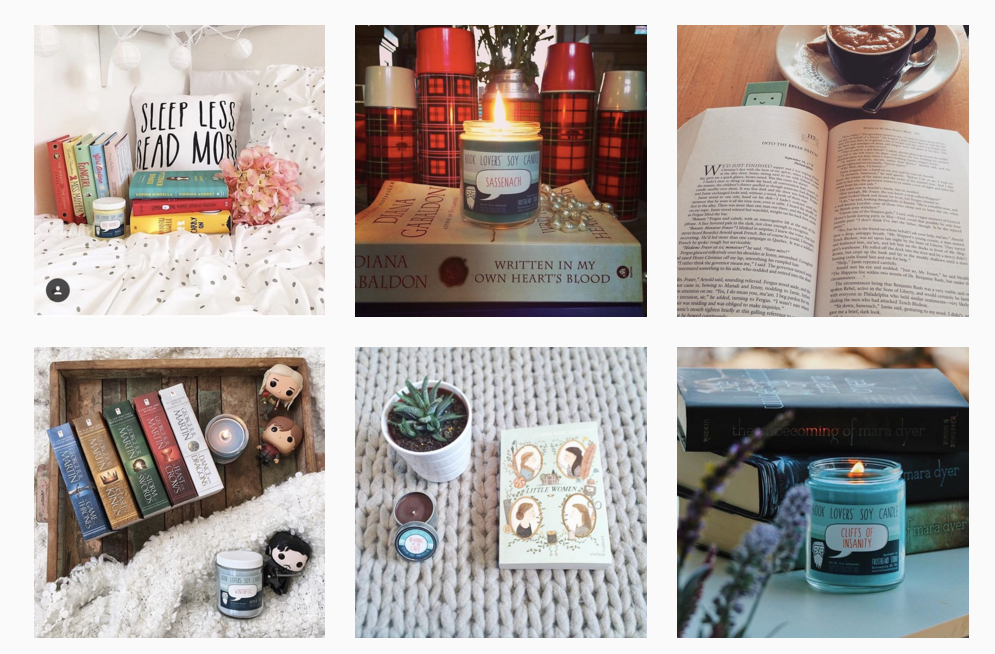
If you’re selling the same products than other stores, you need to make it clear what makes your store different from others.
Barkshop does this be putting some personality into it. Take a look at some of the small tweaks on their homepage:
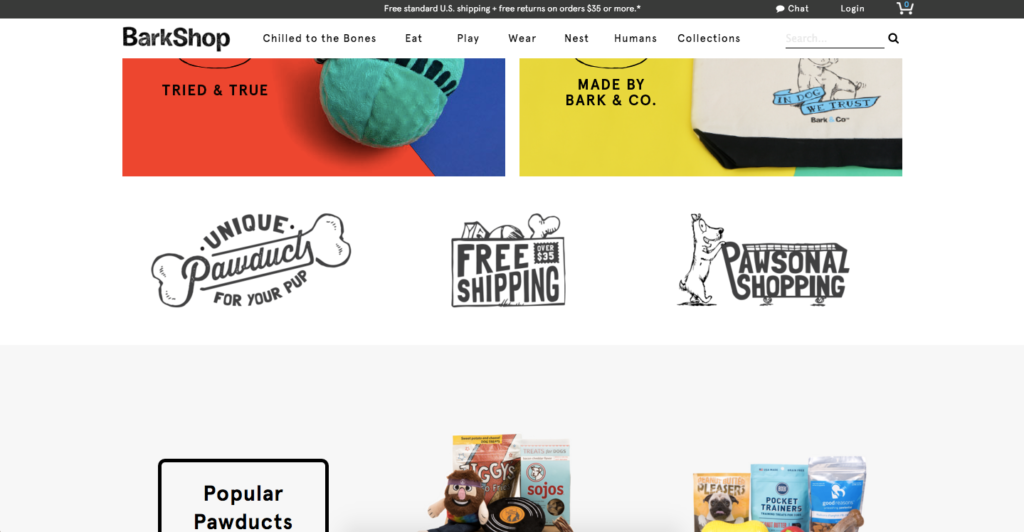
And if I’m talking about standing out with a unique personality, I can’t leave out the Dollar Shave Club:
Another very basic way to stand out is to create a tagline, saying what you sell and who you sell it to.
You can also stand out with your products.
Take a look at the crazy designs (and names) of Chubbies shorts:
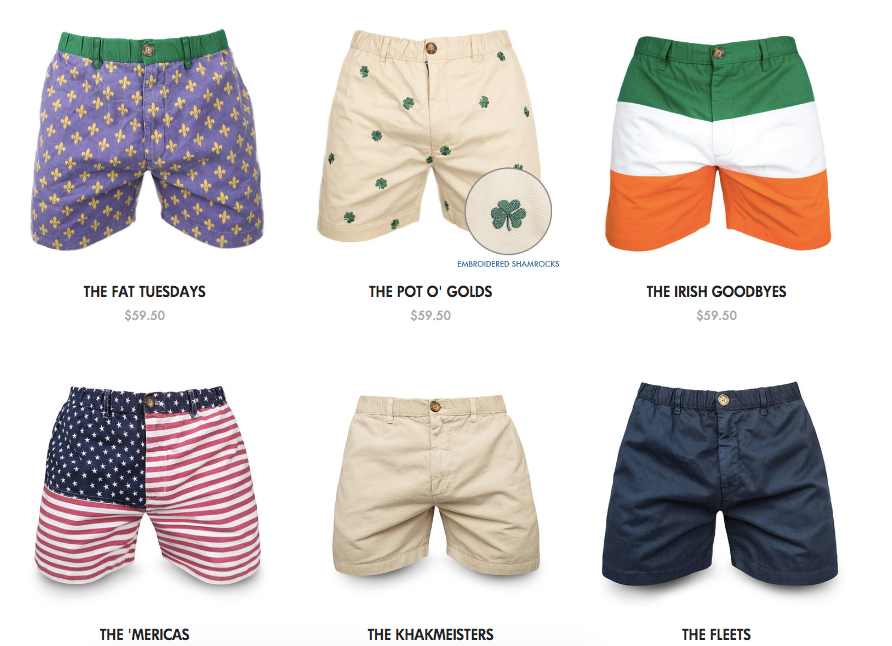
Retargeting
Retargeting offers a great way to get additional exposure to the people that have already been on your website.
Don’t be afraid of coming across too aggressive by showing ads too many times. Research by Wordstream have shown that conversion rates go up with the amount of impressions:
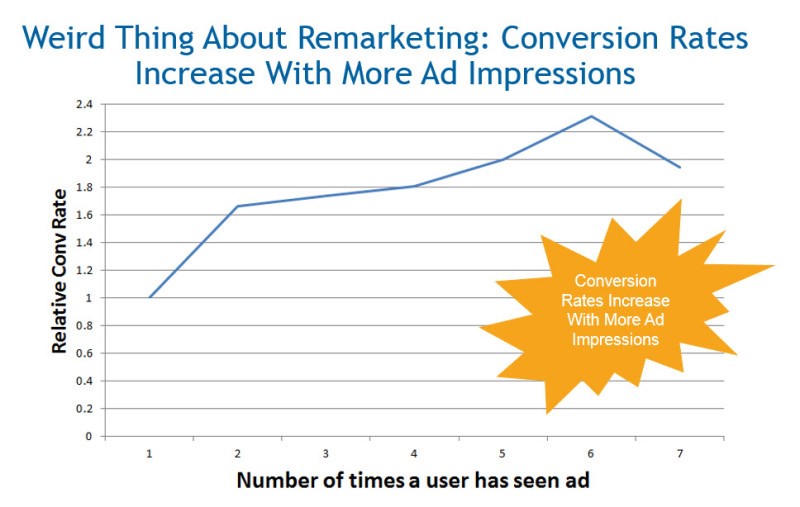
If you’re using banners make sure that people know which store is showing them the ad. Ignore the smaller banner sizes and add your logo. Most of the time someone that sees your ad won’t click on it.
But every impression makes your brand a little bit more familiar.
You can test different approaches to different groups of people. If people have been on your blog or category pages, you show them a generic ad for your store.

But if they have been looking at specific products, you can feature those in your advertisements:
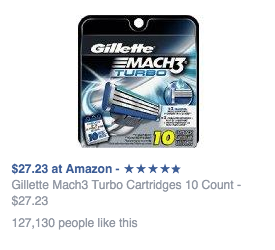
Stage 2: Getting people familiar with your store
In sales they’ve got a great word for this part: lead nurturing. It’s the whole process of educating someone that has just discovered you and assisting them all the way until they are ready to buy.
That’s pretty much what you’re doing here. Communicating more with potential customers, giving them value, showing them who you are and what your products can do for them.
As you can tell this will take time and is not easy. But you could ask yourself each time you’ve create something new (like a blog post or email): are you really delivering value to reader’s life or do you just want to sell some widgets?
Email marketing
After you convince a visitor to become an email subscriber, your first job is to live up to the promise you made.
If you promised a discount, give it to them with a reason to buy. If you promise Exclusive updates, new arrivals, events or contests, and more! in exchange for their email you need to bring it.

After you’ve delivered on that, you can move on the nurturing part. You could create a set of autoresponder emails to deepen your relationship.
Take a look at what Huckberry does with their newsletter:
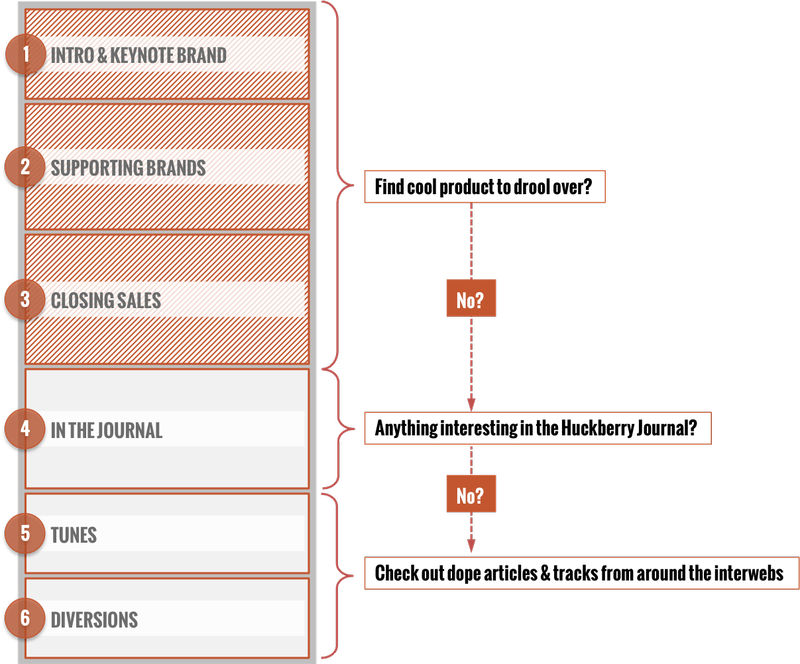
(The image above is part of an amazing analysis on Quora of the outdoor e-commerce brand. Well worth your time if you want to level up what you do with email.)
Basically their newsletter breaks down into 2 parts. The top half is focused on revenue generation: feature a couple of brands that go well together, highlight some products and show what’s on sale.
The second part is all about delivering something of value to the reader: articles from their blog, good music they’ve discovered and other cool links from all around the web.
This approach makes sure that even if a reader isn’t in buying mode, they will still get value. And if a reader gets something from the email, it becomes more likely that they’ll also read the next one.
So remember that you don’t have to be selling all the time in order to please your customers.
Social media
Getting a follower on social media is the light version of staying in touch with you.
The actual tactics will depend a lot on the platform you’re using.
A simple way to make your social media efforts more effective is by embracing the social part of it. Many people put out updates on all platforms and consider that the end of it.
But if you take the time to engage with people reacting to your content, you start building a real community around your brand.
And it doesn’t just have to be only customer service type of conversations. Check out this Facebook post by Country Rebel that features one of their customers who won a fishing competition:
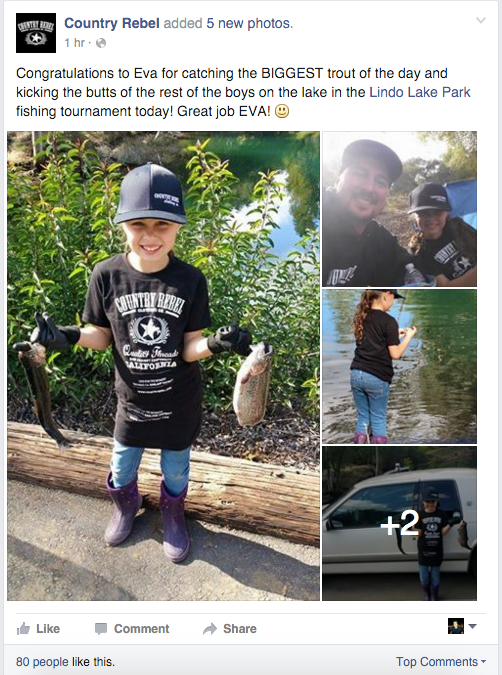
MVMT Watches thanking someone for their kind words:
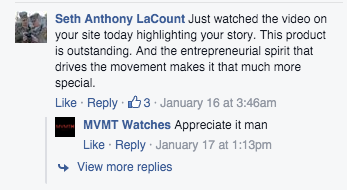
A nice example from Spigen where they are really interested in their customers:
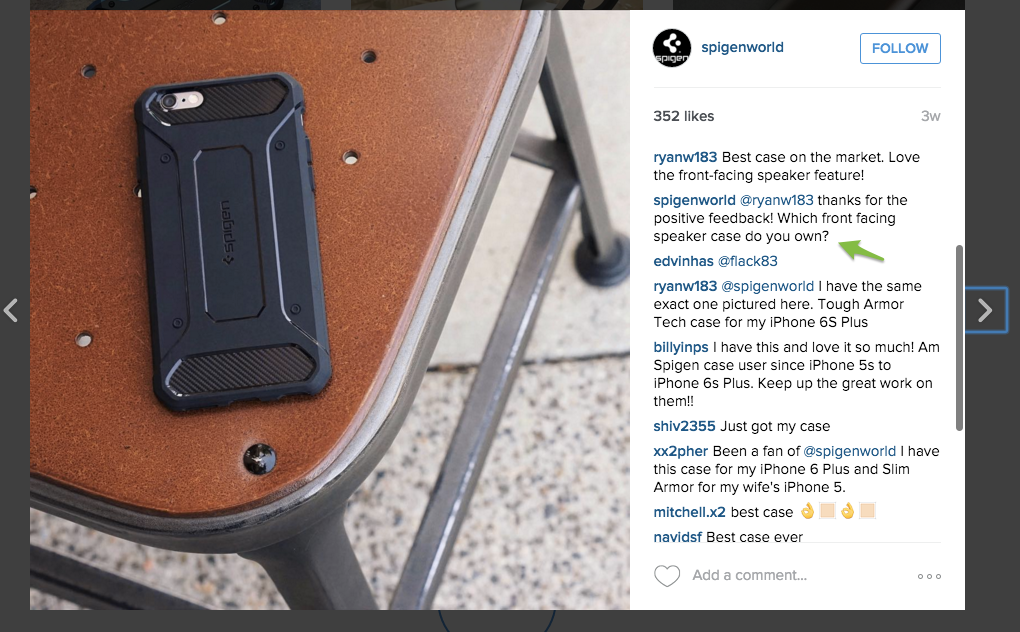
Stage 3: Increase the trust of your online store
I once worked with a client that sold high-end jewellery online (most products were $600 and up). I started out by driving traffic from Google Adwords to product pages on their site.
But I soon found out that converting cold traffic was close to impossible, the conversion rate was around 0.01% conversion rate. Making tweaks to the campaigns and landing pages didn’t make a big difference. So unless we fixed this, the advertising would never be profitable.
The breakthrough came when I built a funnel to move visitors from the product page to the email list. Once they were on there we started showing them what goes on behind the scenes: where do the materials come from, how are the products made, how the jewels get to the customers, etc.
The conversion rate of people that went through that whole process, was several orders of magnitude higher than cold traffic.
The higher the risk (high price, custom products, etc.), the more important trust becomes . There are all sorts of things you can do to increase trust on your store: add guarantees, clear shipping & return policies, include reviews & testimonials, addressing security concerns, etc.
But there are also some things you can do in your marketing to increase your trustworthiness.
Content marketing
If you’re focused on helping someone, they will see you as an expert in that field. That means they trust what you say and recommend.
Maybe you’re teaching them how to fix certain problems they have. RepairClinic does with its articles and mention how their products can help.
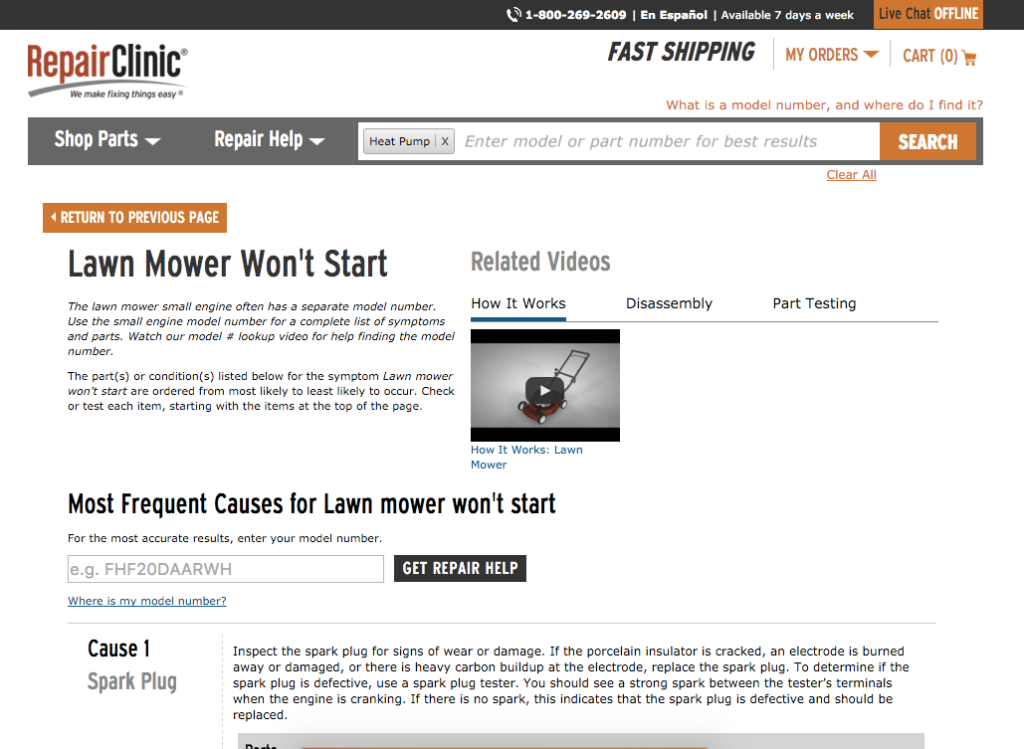
Maybe your customer doesn’t know which product is right for him. Helping him decide what’s important for his upcoming purchase puts serious trust in the bank.
Outdoor store REI has a lot of articles and videos that help its customer decide which gear is right for them.
Measuring progress
If you’re applying the ideas of the examples above, you’re building up credibility with potential customers that might translate into sales.
To end this article I don’t want to say be naive, keep ploughing away and invest more resources even if nothing is happening.
The more people hear about your store, the more sales you should make. But as we’ve seen in this article, marketing efforts can take some time to pay off. Here are some other metrics to watch to see if you’re headed in the right direction:
- New visitors: these are people that have never been on your website.
- Return visitors: this number will grow if you succeed in reaching people multiple times.
You can find these metrics in the New vs Returning visitors report in Google Analytics. Be sure to compare with the previous month or week to see how these value have changed over time.
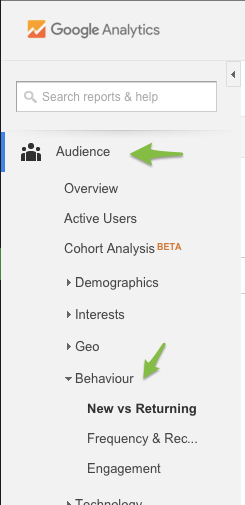
- Number of email subscribers: this shows that people raise their hands and say “Yes I want to learn more about this store”
You can find this number in your email marketing tool like Mailchimp.
- Follower counts on social media: this can be a dangerous number to focus on, but usually if it goes up you’re doing something right.
If you’ve read this far, you’ve got a lot of new ideas on how increase the visibility of your store, show them who your products and store really are and that you’re a good fit for their purchase.
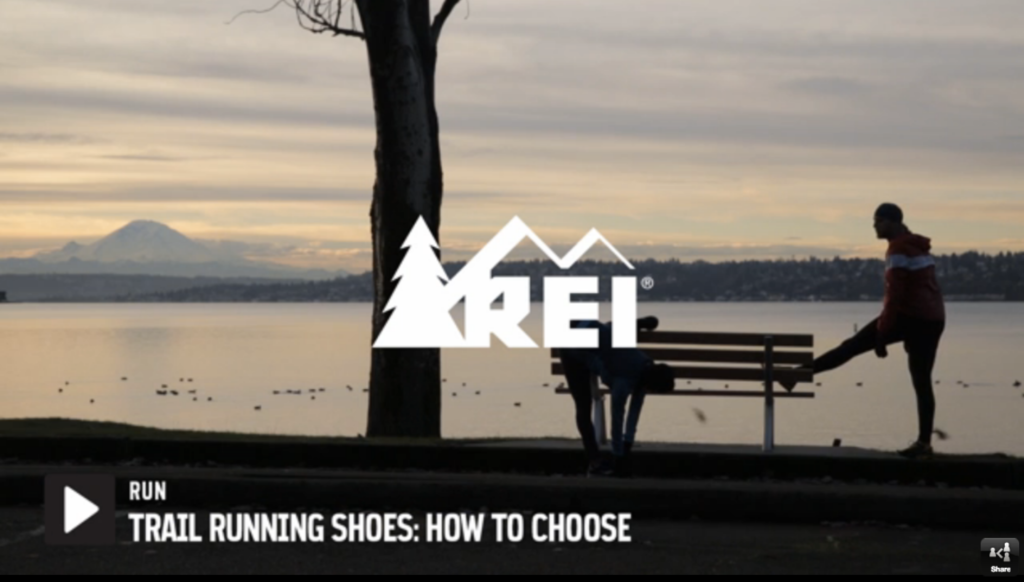

Great input Dennis ! Cheers !
But cannot get the link to summary file of all actions.
Thanks for your comment David!
I’ve updated the links and you should be able to get to the file now.
Wow, excellent article! Good information. About to share it on Twitter. I think my followers could use this information.
Glad to hear the article was useful to you Bobby!
Solid article! You mentioned, with the high end store that you were running Adwords on, that you ended up getting those visitors to opt-in to a drip email sequence to improve the conversion. Do you have anymore examples or insights to provide on what type of info and how many emails should be used for high value products? Thanks!
Thanks for stopping by Alex!
The exact execution will depend on the products you’re selling:
– How familiar are your visitors with these products
– Is it a standard product (like a fancy watch) or something custom made (the jewelry example from the article)?
The emails for this specific client included:
– Overview of how the products are made (focus on craftsmanship)
– Where they got their materials & why that matters (quality, ecological impact, conflict diamonds, etc.)
– Show what will happen if they order (email is focused on getting them started in this process, get in touch with sales people)
– Examples of previous work we’ve done (customers of this client liked having a couple of “basic” models they could tweak to their own tastes)
For more inspiration, have a look at this article: https://moz.com/blog/inbound-lead-generation-ecommerce-marketings-missing-link
Let me know if you got some ideas for your store!
It is true that if you take the time to engage with people reacting to your content, you start building a real community around your brand. Glad to read this article.
It is true that if you take the time to engage with people reacting to your content, you start building a real community around your brand. Glad to read this article.
You mentioned, with the high-end store that you were running Adwords on, that you ended up getting those visitors to opt-in to a drip email sequence to improve the conversion.
That’s right. It can help to convert visitors that aren’t looking to buy right now.